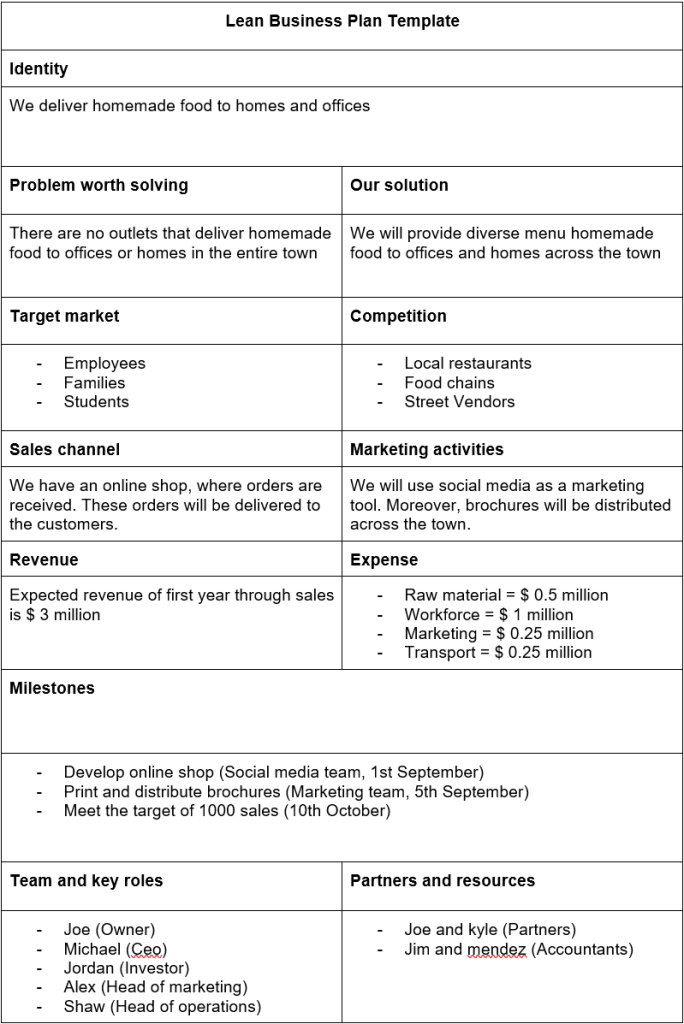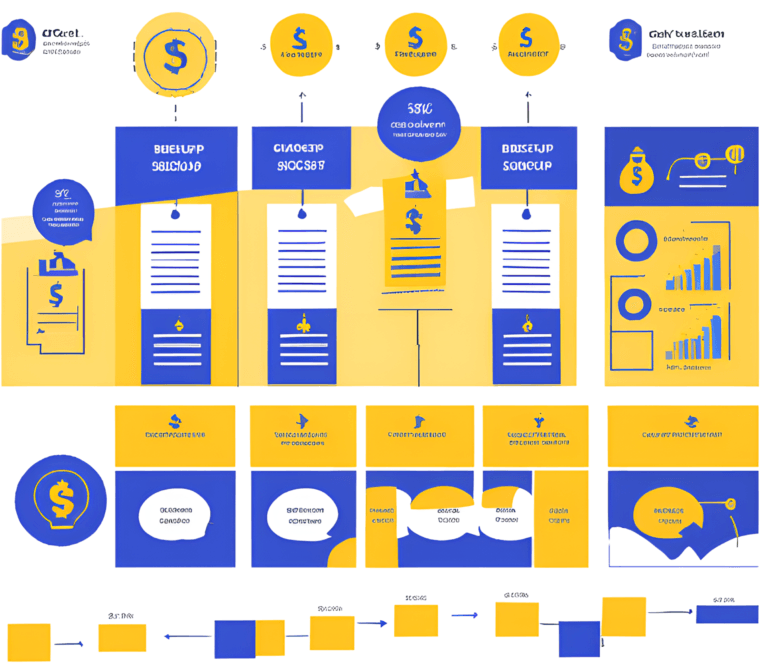In the fast-paced world of entrepreneurship, adaptability and agility are key. This is where the concept of a Lean Business Plan comes into play. Lean business planning is a flexible and efficient approach to creating a business plan that’s particularly well-suited for startups, small businesses, and those operating in rapidly changing markets. In this article, you’ll explore what a Lean Business Plan is, its uses, benefits and what it should include to help entrepreneurs chart their path to success.
What is a Lean Business Plan?
A Lean Business Plan is a condensed, focused, and dynamic document that outlines the core aspects of your business. Unlike traditional business plans, which can be lengthy and detailed, a Lean Business Plan is streamlined to capture the most critical information essential for decision-making and communication.
Distinguishing Between Traditional and Lean Business Plans
Both traditional and lean business plans serve as essential tools for guiding businesses towards success by providing a structured path and direction. However, they exhibit significant differences, which we will explore in this section.
Document Size:
One of the most conspicuous distinctions between traditional and lean business plans is their size. Traditional business plans are typically lengthy, spanning around 45-50 pages or more, while lean business plans are designed to fit on a single page.
Detail Level:
Traditional and lean business plans cover the fundamental aspects of a business plan, yet they diverge in terms of the depth of information they provide. Traditional business plans are known for their comprehensive details, meticulously explaining every facet of the business plan. This level of detail offers clarity to the reader.
Conversely, lean business plans are characterized by succinct bullet points that offer a general overview without delving into intricate explanations. This approach saves time for the reader and enhances comprehension.
Construction Time:
The time required to create a traditional business plan compared to a lean business plan also varies significantly. Traditional business plans demand a substantial amount of time due to the extensive research and detailed analysis involved in their creation.
In contrast, lean business plans can be crafted more swiftly as they do not necessitate in-depth research or exhaustive analysis.
5 Crucial reasons to use a Lean Business Plan
In today’s dynamic business landscape, a Lean Business Plan has emerged as a valuable tool for entrepreneurs and established companies alike. This concise guide outlines five compelling reasons why incorporating a Lean Business Plan into your strategic toolkit can make all the difference in achieving success and staying agile in a rapidly changing marketplace.
Clarity of Vision:
A Lean Business Plan provides clarity about your business’s purpose, goals, and strategies. It ensures that all stakeholders, including team members and investors, are on the same page.
Focus on Key Elements:
By eliminating unnecessary details, a Lean Business Plan allows you to concentrate on the critical elements that drive your business forward, such as your value proposition, target market, and revenue streams.
Quick Decision-Making:
It enables quick and informed decision-making. In the dynamic world of startups, you need to adapt rapidly to changing circumstances, and a Lean Business Plan allows you to pivot with ease.
Communication Tool:
A Lean Business Plan serves as a powerful communication tool. It conveys your business concept, strategies, and financial projections concisely, making it easier to attract investors or collaborate with partners.
Resource Allocation:
It aids in efficient resource allocation by highlighting the most essential areas of your business. This ensures that your time, money, and efforts are directed where they matter most.
Attracts Investors:
Securing investments is a top priority for every business to ensure its continuous operations. Consequently, companies employing lean business plans tend to draw more investor interest compared to those relying on traditional, lengthy business plans.
The rationale behind the appeal of lean business plans to investors lies in the fact that investors are typically individuals with significant financial resources but limited time. Consequently, a concise one-page lean business plan is more likely to capture their attention, whereas a lengthy 50-page business plan may deter them.
In fact, the lean startup method helps you focus on what matters most, saves time, and presents your business in a professional way without overwhelming you with unnecessary details.
What Should a Lean startup Business Plan Include?
Lean business plans are on the rise within the business sector due to their perceived efficiency and effectiveness. In this section, we will delve into the process of crafting a lean business plan.
Business Overview:
Start with a concise executive summary that captures the essence of your business. Describe your mission, vision, and the problem your product or service solves.
USP and Unique Value:
Clearly define your value proposition or unique value, what makes your offering distinctive, and why customers should choose you over competitors.
Target Market:
Identify your target market and your ideal customer persona. Include market size, demographics, and key customer needs.
Business Model:
Describe your business model, including how you plan to generate revenue. This could include pricing strategies, sales channels, and distribution methods.
Marketing and Sales Strategy:
Outline your marketing and sales tactics. How will you reach and acquire customers? What channels will you use, and what’s your customer acquisition cost?
Competitive Analysis:
Analyze your competitors and their strengths and weaknesses. Highlight your competitive advantages and your strategy for standing out in the market.
Forecasting & Budget:
Provide simplified financial projections, including revenue forecasts, expenses, and cash flow projections. This is crucial for assessing your financial sustainability.
Team and Roles:
Briefly introduce your team members and their roles. Investors and partners want to know who’s driving the business.
Milestones and Key Metrics:
Set measurable milestones and key performance indicators (KPIs) to track progress. This helps you stay accountable and adjust your strategies as needed.
Risks and Mitigations:
Identify potential risks to your business and outline strategies for mitigating them. Being prepared for challenges is a hallmark of a resilient startup.
Lean Business Plan Template

Who should use lean startup business plan?
The lean startup business plan is best suited for:
Entrepreneurs and Startups:
It’s especially valuable for individuals or teams launching new businesses with limited resources. The lean approach allows them to quickly test and validate their business concepts without extensive upfront planning.
Early-Stage Businesses:
Businesses in their early stages of development can benefit from lean business plans to stay focused on essential strategies and iterate rapidly based on customer feedback.
Small Business Owners:
Small business owners looking to pivot, expand, or refine their existing operations can use lean business plans to make strategic adjustments efficiently.
Solo Entrepreneurs:
Individuals starting businesses on their own can use lean plans to outline their vision and strategies without getting bogged down in excessive detail.
Tech Startups:
Lean startup principles are commonly applied in the tech industry, where rapid innovation and adaptation are critical for success.
Creative Ventures:
Artists, designers, writers, and other creative professionals can use lean plans to outline their projects or creative businesses in a concise manner.
Nonprofits and Social Enterprises:
Organizations in the nonprofit sector or those with a social impact focus can use lean business plans to define their missions and strategies efficiently.
Why banks and investors want to see Lean Business Plan?
Banks and investors want to see a Lean Business Plan for several compelling reasons, as it offers several advantages when compared to more traditional, lengthy business plans:
Clarity and Focus:
A Lean Business Plan distills the key aspects of a business into a concise and focused document. It provides a clear and easily digestible snapshot of the business’s core elements, making it easier for banks and investors to quickly understand the business model and value proposition.
Efficiency:
Lean Business Plans are efficient to review. Banks and investors often receive numerous business plans, and a Lean Business Plan allows them to assess a business quickly, saving time and resources.
Flexibility and Agility:
Startups and businesses operating in rapidly changing markets must be agile and able to pivot quickly. Lean Business Plans emphasize adaptability, making it easier for banks and investors to see that the business can respond to changing circumstances effectively.
Focus on Key Metrics:
A Lean Business Plan typically includes key performance indicators (KPIs) and milestones. This helps banks and investors gauge the business’s progress and potential for success, allowing them to make more informed investment decisions.
Risk Assessment:
Lean Business Plans often include a section on risks and mitigations. This demonstrates that the entrepreneur has thought critically about potential challenges and has a plan to address them, increasing confidence in the business’s ability to navigate adversity.
Communication:
A Lean Business Plan serves as an effective communication tool. It conveys the business’s value proposition, target market, and revenue model succinctly, enabling banks and investors to grasp the opportunity quickly.
Resource Efficiency:
By focusing on essential elements, a Lean Business Plan highlights where resources will be allocated. Banks and investors want to see that resources are allocated efficiently and that the business has a clear plan for growth.
Transparency:
The simplicity of a Lean Business Plan can enhance transparency. Banks and investors appreciate a straightforward presentation of the business’s goals, strategies, and financial projections.
Adaptability:
Lean Business Plans are not static documents; they are designed to evolve with the business. Banks and investors want to see that the entrepreneur is open to adjustments and improvements in response to market feedback and changing conditions.
Alignment with Lean Startup Principles:
Lean Business Plans are often aligned with the principles of the Lean Startup methodology, emphasizing validated learning, iterative development, and a focus on what truly matters. This approach resonates with many investors seeking innovative and agile businesses.
Bottom Line
In conclusion, the lean startup business plan offers a streamlined and focused approach to business planning, ideal for entrepreneurs, startups, early-stage businesses, small business owners, and creative ventures. It emphasizes clarity, flexibility, and rapid adaptation, making it a valuable tool for those looking to test and iterate on their business concepts efficiently. While it may not be sufficient for securing significant funding from traditional sources, it serves as an excellent starting point for outlining core strategies and communicating your vision. Ultimately, the suitability of a lean business plan depends on your specific business goals and the stage of development your venture is in.






